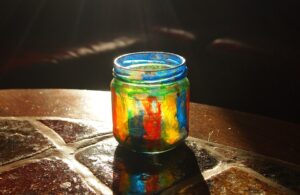Finishing glazes are the final coat applied to pottery pieces, and they are generally used as a sealant. When applied, they go on as a clear or tinted liquid. Firing them in the kiln produces the final seal as the glaze melts and hardens, and it can also change the way a piece looks. Some glazes add a matte finish to a fired piece, but others deliver a smooth satiny coat that makes it shine. Learning about different glazes is a good way to enhance pottery skills.
The final glaze on any pottery piece is important if it is to be used with food or liquid, but there are also glazes made solely for decoration. These are colored glazes, and they function in the same manner as paints. When fired, some of them may provide the final glazing coat as well as the decoration and sealing necessary for a useful piece. Other glazes are made solely to add colorful decoration, and they may not have the grain size needed to completely seal a piece of pottery. If sealing is necessary, a second glaze coat will be applied and fired before the piece is finished.
Sealing any pottery piece is important if it will contain liquids, and an experienced potter should enhance their skills by learning about the important functions of glazes. Many types of clay contain lead, and sealing a piece with glaze adds a barrier to keep the lead out of the food or water kept inside the pottery piece. If the piece will be handled frequently, lead may still be a concern. These are just a few reasons why it is important to know which glazes will seal a pottery piece the best.
Glazes for decoration, sealing and finish may all be the same glaze, or three separate glazes can be used to create a unique effect. This is just one more area where a pottery student can expand their skills while creating beautiful clay pieces.





















